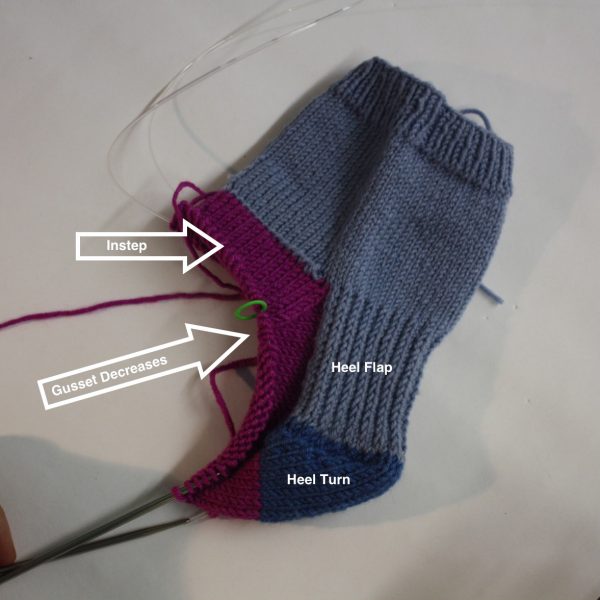Post by Gretchen, Lion Brand Yarn Studio Education Director
This week in our Sock Along we were talking about gussets.
A gusset is defined by Merriam-Webster as:
1. a usually diamond-shaped or triangular insert in a seam (as of a sleeve, pocketbook, or shoe upper) to provide expansion or reinforcement
2. a plate or bracket for strengthening an angle in framework (as in a building or bridge).

I love this illustration from Merriam-Webster.com of the second type of gusset because it looks so much like a sock gusset!
However, sock gussets actually serve the first purpose: they are groups of stitches inserted between the heel flap and the instep to allow the sock to expand around the wide part of the heel and ankle.
In classic cuff-down socks with a heel flap, the gusset is the last part of the heel turn worked and shaped by the line of decreases that return you to your original stitch count. If you are working from the toe-up, the gusset is worked first and is shaped by a line of increases.
Let’s examine these instructions from our Father’s Day Socks, which are worked from the top down:
Continue in this way, working 1 more st between dec until all 32 sts have been worked, end with a WS row – 20 sts for heel.
So after completing the heel turn, you should have 20 stitches on your heel needle, and 32 on your instep for a total of 54 – 12 fewer than you began with.
Next Rnd: K across heel sts, with same needle, pick up and k 19 sts along heel flap, with 2nd needle work across 16 sts of instep, with 3rd needle, work across 16 sts of instep, with 4th needle pick up and k 19 sts along heel flap and k across 10 heel sts – 90 sts.
After picking up the stitches along the sides of the heel flap, you now have 90 stitches in total (26 more than you started with) and you are also working in the round again.
When picking up along the heel flap, I use the slipped stitches along the edge as a guide.
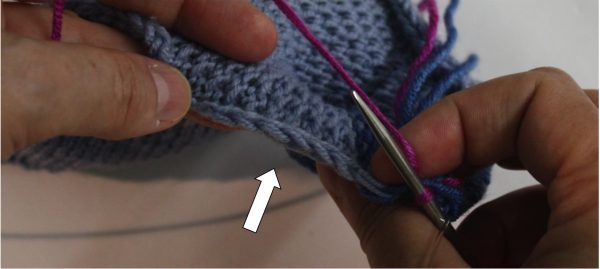 Pick up one stitch under each slipped edge stitch – being careful to pick up both sides of the stitch!
Pick up one stitch under each slipped edge stitch – being careful to pick up both sides of the stitch!
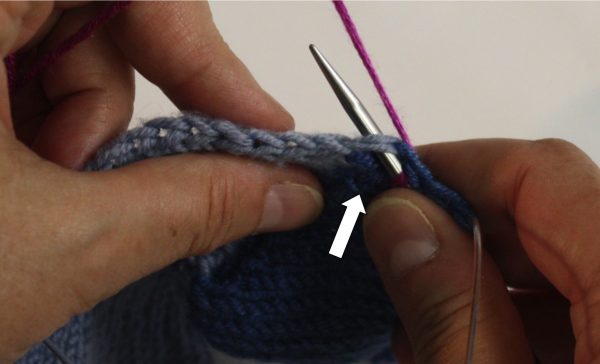
If you have worked a different number of rows in your heel flap than the pattern assumes, whether because your row gauge is different or you have adjusted the heel flap to accommodate a specific foot, you will need to pick up a different number of stitches for your gusset.
At the top of the heel flap there is often a gap where there are no more slipped stitches to pick up,
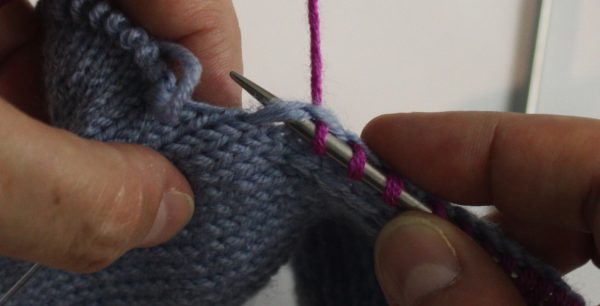
but you still need another stitch before the instep stitches. Resist the temptation to pick up the strand between columns of stitches! Look at the line of the picked up stitches – you want to continue in the same column and pick up one stitch from the center of the next stitch in that line.
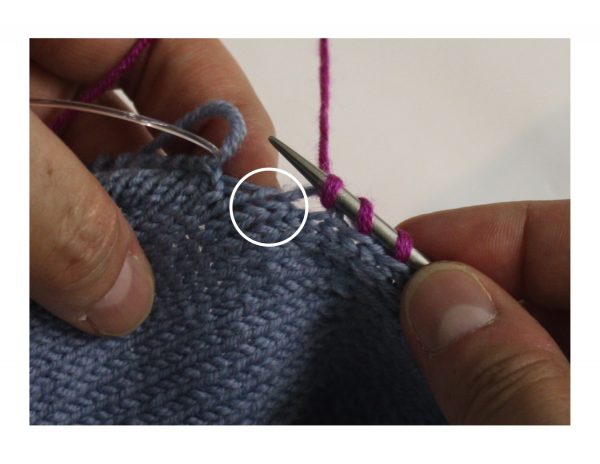
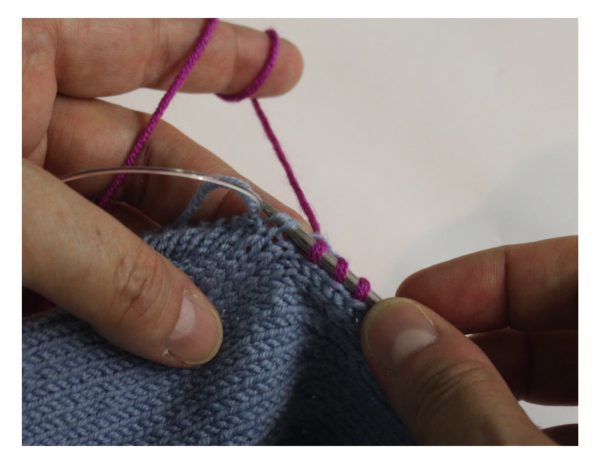
On the other side, you’ll need to pick up that extra stitch first.
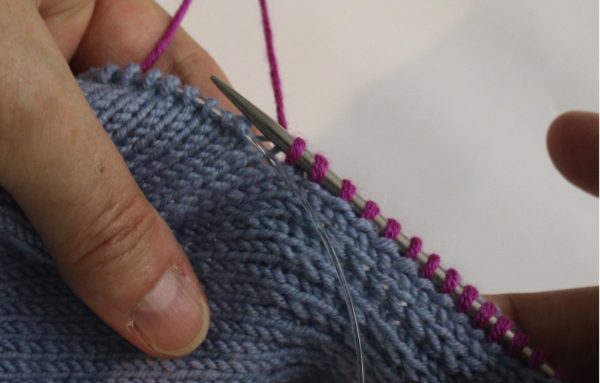
Place marker for beg of rnd at center of heel sts.
I am working magic loop so I arrange my stitches in 2 equal groups on each side to work the gusset and the beginning of round at the center of the heel. I will place stitch markers at the beginning & end of the instep stitches to remind me to work the decreases of the gusset. This puts the decreases in the middle of the group of stitches and keeps them balanced.

Shape Gusset
Rnd 1: K across sts on 1st needle, work in k3, p1 Rib across instep sts on 2nd and 3rd needles, k across all sts on 4th needle.
Rnd 2: K to last 3 sts on 1st needle, [this is where I placed my marker, so I knit to 3 stitches before marker] k2tog, k1; work in K3, p1 Rib on 2nd and 3rd needles across instep sts; on 4th needle, k1, ssk, k to end of rnd.
Rep Rnds 1 and 2 until 64 sts rem.
Here is the gusset partially complete, with the parts of the sock around it labeled.
